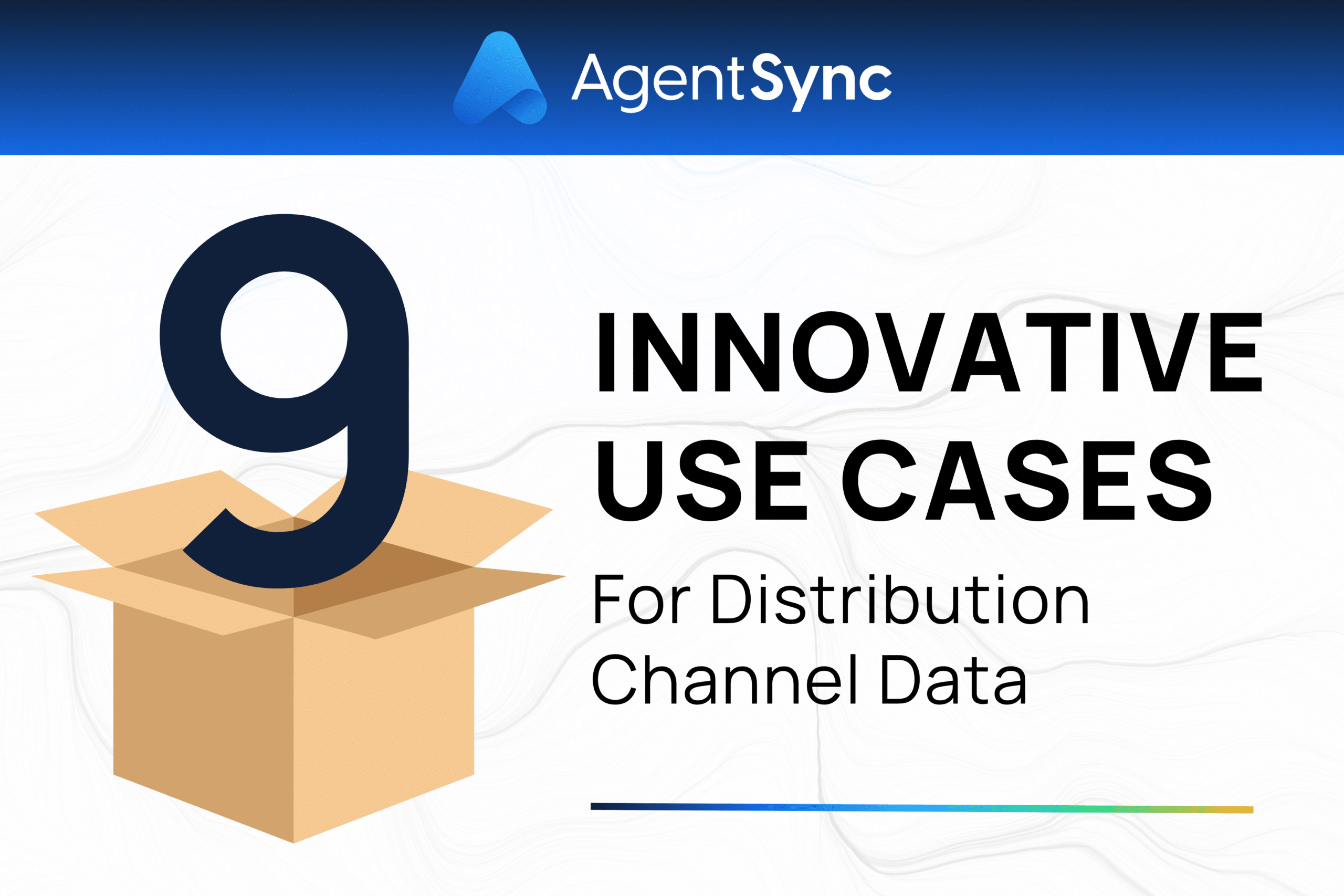

The first most expensive aspect of an insurance carrier’s business is claims—no surprise there. But often the second most expensive line item in the insurance carrier budget is paying out commissions to producers and brokers.
Many factors go into this compensation structure, from where a producer sits in the distribution hierarchy, to how much business they have written for the carrier, to the type of product they’re selling. Yet, insurance carriers and their sales executives often decide broker compensation contracts based on gut instincts or in reaction to market circumstances.
Taking a reactive approach to insurance broker compensation is made all-the-more difficult when an insurance carrier is also working against a reputation of being difficult to work with, or slow to onboard.
This is where software that goes beyond mere compliance to full distribution channel management (DCM) provides the best return on investment. Not only does good DCM software streamline onboarding and compliance obligations to ensure growth and compliance don’t compete, but it also gives you the business data you need to make competitive choices about your distribution partners.
Ending tension between teams: Sales and compliance/operations
Even the best insurance carriers often carry tension between their sales or distributor recruitment teams and their compliance and operations teams. Compliance and operations teams are responsible for keeping business risks low. Recruiters and sales specialists are focused on hitting ever-increasing numbers for sales and partnerships. The tension is understandable—everyone understands that crossing every t and dotting every i takes time, and every day that it takes is a day that a distributor isn’t selling your products, or, worse, is selling your competitors’ products.
However, the alternative, where speedy onboarding takes precedence over thorough disclosure and compliance verification processes, is absolutely untenable because it increases your business risk substantially.
The tension and time of onboarding explains why so many insurance carriers also take the tack of retaining producers and continuing to pay for appointments even when the producer or broker isn’t a standout seller, or doesn’t sell in a given state at all.
Download 9 Innovative Use Cases for Distribution Channel Data.
7 ways to leverage data for better insurance broker management and compensation models
Compliance-forward businesses rightfully take a dim view of agents and brokers that push for sales without taking basic steps to verify that they are, in fact, in compliance. So, how can insurance carriers twin their compliance and distribution efforts together? One clear way is to unlock data from distribution channel management software to inform broker compensation models in a way that retains and incentivizes key players while making the carrier nimble enough to keep their feet in shifting markets.
No. 1: Using NIPR data to automate onboarding while mitigating risk.
It’s hard to talk broker compensation without talking about the advantages of using data from the industry source of truth, the National Insurance Producer Registry (NIPR), to automate what you can and streamline what you can’t during onboarding. You end tension with recruiters and producers alike when you make compliance automatic and friction free.
No. 2: Broad appointment data gives you insights into business opportunities and competitive intelligence.
It’s a matter of state record which insurance carriers have appointed which insurance brokers and agents. But most carriers only collect the producer appointment records that are pertinent to that specific carrier. If, however, you use a national producer number (NPN) to sync all of a distributor or producer’s appointments, you get data points that can give you interesting insights that are useful beyond their relevance to compliance. This data could intrigue your business operations or sales teams, for instance:
- Have a lot of producers appointed in sales regions you don’t offer products in? Those are easy states for potential expansion—you already have licensed distributors there!
- Do the majority of your independent distributors have appointments with your competitors? Could be an area worthy of a more protective distribution strategy.
- Do your producers have an appointment in a line of authority you’re looking to expand? Maybe their appointment data can give you some ideas for M&A activity that makes you a more competitive player in that space.
No. 3: Leveraging APIs to integrate compliance intel with commission information.
Using API-driven integrations to saturate your systems with accurate and up-to-date information is a no-brainer because it can very easily end the pending cycle of commissions that get held in limbo while your team validates a producer’s license and appointment information. That kind of compliance validation can be automated for frictionless commission payments when you use APIs with a distribution channel management software.
But that’s not the only way to make use of commissions and compliance data together. You can get real business insights. For instance, if your business finds itself paying out fewer and fewer commissions to an agency, FMO, or IMO that was formerly a top distribution partner, you may be able to interrogate the data for answers like:
- Did a particularly strong producer retire?
- Did one of their subagencies in a state close or move?
- Did a downstream power-agency terminate its appointment because it’s been sold or absorbed into a different agency’s structure?
- Did your partner activate a new appointment in that state, indicating that they’re now writing more business with a competitor?
No. 4: Incentivize broker contracts according to data, not someone’s “gut.”
Once quality data saturates your systems, it’s easier to form a coherent strategy for the future of your broker compensation management. You could decide to assign individual brokers or whole agency verticals to compensation structures based on bands of business written, and even factor in a per-appointed-producer vs. per-agency model of banding. When you identify risks from your independent partners’ appointment data, you can use commission structures to incentivize writing your policies vs. a competitor in specific states.
No. 5: Use individual producer data to flag unusual activity.
Integrating commission payouts and compliance data makes it easier to flag individual licensees with abnormal performance. Sometimes high payments to a single producer are a sign of NPN overrides—an illegal practice where a single producer submits business on behalf of other subagents who can then forego getting a carrier appointment. However, unusually high commission payments can just be a sign of a superseller—an agent who has worked to hone their skills and who has a great market fit. If that’s the case, being able to quickly identify these individual producers and build case studies out of their acumen is also to your advantage.
No. 6: Use data to gauge real ROI on agents.
Some insurance carriers want to measure the real return on investment (ROI) for individual products in order to eliminate appointment renewals in states where a producer isn’t consistently writing enough business to justify the cost of appointment. But even carriers that are fine taking a loss on individual appointments across states may want to be able to measure ROI to better enable their internal Sales and Recruitment teams to encourage and engage low performers, or to give Sales teams a better understanding of where some effort might more deeply engage states and regions where there’s untapped opportunity.
No. 7: Proactively assessing your risk
A single high-performing agency is awesome for your bottom line, but is also a constant risk to you if they decide a competitor’s products and commission structure represent a better value. One distributor may be a massive pain in the neck—but they move enough business that it justifies hands-on white-glove service. Another distributor may be more trouble than they’re worth. Each of these scenarios has a clear answer that is determined by the data in your distribution channel management solution, but, if you’re treating it as just a souped up licensing and appointment tool, then you’re letting these opportunities to future-proof your business slip by.
Better DCM aligns compliance and Sales
Compliance and growth don’t have to compete. When you bring on a true distribution channel management (DCM) solution, you can achieve the gold standard for compliance while streamlining and automating your process for growth. But some of the biggest gains also come in the innovative ways you can leverage your data for business insights.
Perhaps you’re interested in assessing your areas of vulnerability. Or maybe you’re locating new states where you have underdeveloped partnerships and opportunities for growth. Maybe you’re simply looking for an effective broker compensation philosophy that’s strategic and aligned to your business goals instead of being reactive. Regardless, the right DCM software will help you be more nimble in every market cycle.
Why AgentSync is the vendor of choice for business operations data
AgentSync’s distribution channel management platform has some of the most intuitive and user-friendly producer licensing, appointment, and compliance solutions on the market. But for businesses looking to move beyond producer compliance, we also bring the most robust business data and reporting to our users, with:
- 50-plus out-of-the-box reports
- Custom report generation, no upcharges or change orders required
- Contextualized license and appointment data delivered in your system without needing “translation”
- Competitive intel on your independent producers’ additional appointments
- API features that seamlessly integrate data across your systems
- Contract Request Service features that make ingesting new producers easy, regardless of how their agency submits the contract
- Hierarchy Management that make assigning producers to commission structures and contract groups simple, even at scale
For more about how our customers are innovating with our robust reporting, download “9 Innovative Use Cases for Distribution Channel Data.”

